Iron fist of the Red Army. Creation of armored troops
The first tanks appeared in the Red Army during the civil war. These were captured vehicles captured in battles and then used against former owners. For the first time in battle, they were used during the Soviet-Polish war of 4 in July 1920, when in the Polotsk area 33 tank “Ricardo” 3 tank squadron of the 2 squadron supported the offensive 1920 SD. By the end of the 55, the Red Army already had 10 automobile and 17 avtankovanki detachments, armed with the British Mk.V, French Renault FT.1921 and armored vehicles. In May, 105, by order of the PBC, the Office of the Chief of the Armored Force of the Red Army was created, to which armored trains were also subordinate, the number of which was within 120-29 units. Total Republic Armor Forces had about 208 thousands of personnel in the 1923 units. During the post-war transition to peacetime states in the summer of XNUMX, the Armored Forces were disbanded. Detachments of armored vehicles were transferred to the cavalry, and tanks and armored trains to infantry and artillery, respectively.
In the same year, all avtotankovye detachments are reduced to a separate tank squadron (the name itself says that many military experts saw a great similarity between tanks and warships and the methods of their use). In 1924, the squadron was transferred to the regimental system. The tank regiment consisted of the 2 tank battalion (line and training) and service units, a total of 356 people, 18 tanks. In subsequent years, several more tank regiments of three-battalion composition were deployed. The period of the search for the most effective organizational forms of tank forces began, which dragged on for 20 years, right up to the beginning of the Great Patriotic War. And during the war and after it, the organizational structure of the armored forces repeatedly underwent numerous changes.
The development of armored troops was hampered by the lack of their own models of armored vehicles. So, by 1927, the Red Army Tank Park was represented by the entire 90 by the machines of the trophy brands “Ricardo”, “Taylor” and “Renault”.
But the captured cars were already rather worn out, and since there were no new arrivals from abroad, the question arose of creating our own models of armored vehicles. To this end, in April 1924 was created the Military Technical Directorate (VTU) of the Red Army. November 22 The VTU 1929 was transformed into the Army Mechanization and Mechanization Directorate (UMMA). He was headed by the commander of the 2 rank (with 1935) I.AHalepsky. Later, his position became known as the head of the Armored Directorate Directorate (ABTU) of the Red Army. This Directorate did a great deal to create the USSR tank forces, although the fate of Khalepsky himself was sad - he was arrested in 1937, and shot in 1938.
Back in 1927, under the leadership of the Chief of the General Staff of the Red Army, M.N. Tukhachevsky, an 5-year plan for the development of the armed forces up to 1932 was developed, but, strangely enough, the original tanks were not mentioned in it. However, then it was still not clear what they should be and how soon the industry would master their production. The error was corrected, and in the final version of the plan it was planned to release 1075 tanks during the five-year plan.
18 July The 1928 of the Revolutionary Military Council adopted the “System of tank, tractor, car, armor armament of the Red Army”, compiled under the leadership of Deputy Chief of General Staff V.K. Triandafilov, known as a staunch supporter of “armor case”. She acted until the end of the 30-s in several successive editions for each five-year period.
30 July 1928. Sovnarkom approved the first five-year plan for the development and reconstruction of the Armed Forces of the USSR for 1928-32. According to him, by the end of the five-year period, in addition to the release of 1075 tanks, it was necessary to form an additional 3 new tank regiment. In July, 1929, this plan was revised upwards - by the end of the five-year plan, there should have been 5,5 thousands of tanks in the Red Army. In reality for 1929-1933. The industry issued 7,5 thousands of tanks.
By 1932, the Revolutionary Military Council already provided for armored troops: 3 mechanized brigades (ICBMs), 30 mixed tank battalions (32 light and 34 medium tanks in each), 4 heavy tank battalions (35 tanks in each) of the Reservation Command (13 tanks in each) of the Main Command (XNUMX) ) and XNUMX mechanized regiments in cavalry.
The appearance in large quantities of our own armored vehicles allowed us to start creating new organizational structures for tank forces. 17 June 1929. The Revolutionary Military Council, at the suggestion of V.K.Triandafilova, adopts a decree which said: “Taking into account that the new genus weaponswhich are the armor of force, is not well studied in terms of its tactical use (for independent and in conjunction with infantry and cavalry), and in the sense of the most profitable organizational forms, recognize the need to organize in 1929-1930. constant experimental mechanized unit. ”A month later, the document was approved by the Central Committee of the CPSU (b), and among other things, the minimum production program for 3,5 of thousands of tanks was specified during the first five-year plan.
In pursuance of the resolution, an experienced mechanized regiment was formed in 1929, consisting of a battalion of MC-1 tanks, a BA-27 armored division, a motorized rifle battalion, and an air squadron. In the same year, the regiment took part in the exercises of the Belarusian Military District (BelVO).
In May, the 1930 g. Regiment deployed to the 1 th mechanized brigade, later received the name of KB Kalinovsky - the first commander of the brigade. Its initial composition is a tank regiment (two-battalion composition), a motorized infantry regiment, a reconnaissance battalion, an artillery division, and specialized units. The brigade had 60 MC-1, 32 wedgies, 17 BA-27, 264 vehicles, 12 tractors. In 1931, the organizational structure was strengthened. Now the 1-I MBR included:
1) shock group - a tank regiment consisting of two tank battalions and two self-propelled artillery battalions (due to the lack of SAU, they are equipped with towed 76-mm cannons on auto-thrust);
2) reconnaissance group - a battalion of tankettes, an armored battalion, an auto-gun battalion, and an artillery division;
3) artillery group - 3 division 76-mm cannons and 122-mm howitzers, air defense division;
4) infantry battalion on vehicles.
The number of troops was 4700 people adopt: 119 tanks, 100 tankettes, 15 armored vehicles, 63-propelled anti-aircraft machine gun, 32 76-mm cannon, 16 122-mm howitzers, 12 76-mm and 32 37-mm anti-aircraft guns, 270 car, 100 tractors.
At the same time (1932), the 4 tank regiment of the three-battalion formation was formed: 1 in Smolensk, 2 in Leningrad, 3 in the Moscow Military District, 4 in Kharkov, and 3 of the separate territorial tank battalion. In the cavalry formations, the 2 mechanized regiment, the 2 mechanized division, and the 3 mechanized squadron were created. However, this was only the beginning. In the spirit of the then rise, much larger measures were envisaged.
1 August 1931 The USSR Labor and Defense Council adopted the “Great Tank Program”, which stated that advances in tank construction (increased production of tanks - 170 units in 1930, the emergence of new models of BTT) created strong prerequisites for a radical change general operational tactical doctrine on the use of tanks and demanded decisive organizational changes of the armored troops in the direction of creating higher mechanized formations capable of independently solving tasks both on the battlefield and throughout the opera Noah depth of modern combat front. New fleet material created the prerequisites for the development of the theory of deep combat and operations. ”The plans were matched by the name: in the very first year it was supposed to give the army 10 thousands of vehicles. The same decree set up a commission to develop the organization of armored troops (ABTV), which at the 9 meeting in March 1933 recommended to have mechanized corps consisting of mechanized brigades, RGK tank brigades, mechanized regiments in cavalry, tank battalions in rifle divisions in the Red Army.
Along with changes in the organizational structure of the ABTV, the views on the use of tanks also changed. In 20-s, the main principle of combat use of tanks was considered to be their close interaction with the infantry. At the same time, already in the “Temporary instruction on the combat use of tanks” of 1928, it was envisaged to use tanks as the so-called freely maneuvering group of the forward echelon, operating outside the fire and visual connection with the infantry. This provision was included in the Field Manual of the Red Army in 1929.
At the end of the 20-s, thanks to the work of V.K.Triandafilov and the chief inspector of tank forces (1-th deputy head of UMMA) K.K.Kalinovsky, the “Theory of modern armies in modern warfare” was formulated (better known as “Theory of deep combat and operations ”), the essence of which was expressed by the solution of two tasks:
1. Breaking the front of the enemy with a simultaneous strike on his entire tactical depth.
2. Immediate entry into the breakthrough of mechanized forces, which in cooperation with aviation must advance to the entire depth of the enemy’s operational defense until the defeat of his entire group.
At the same time, this military doctrine, with all its progressiveness, was an obvious reflection of the then prevailing sentiments and the “proletarian strategy of crushing” proclaimed by Stalin and Voroshilov, without assuming a different picture of events, which played a tragic role a decade later.
The death of Triandafilov and Kalinowski in 1931 in a plane crash interrupted their fruitful activities.
From the beginning of the 30-s, a new stage of development of the theory of the use of ABTV begins. These problems were discussed in the pages of the magazines “Mechanization and Motorization of the Red Army”, “Armored magazine”, “Military Thought” and others. An active part in the discussion was taken by S.N. Ammosov, A.Ye.Gromychenko, P.D.Gladkov, A.A.Ignatiev, P.A. Rotmistrov, I.P. Sukhov and others. The result was the creation of the official theory, enshrined in the manuals on the combat use of ABT 1932-1937. and in the field regulations of the Red Army 1936-1939. They provided for the three main forms of combat use of tank forces:
a) in close cooperation with the infantry or cavalry as groups of their direct support (tank groups SPE, NPC);
b) in tactical interaction with rifle and cavalry units and formations as their distant support groups (DPP tank groups);
c) in operational interaction with large all-arms associations (army, front) as part of independent mechanized and tank formations.
Large-scale tasks required new organizational structures. A major step was the emergence of qualitatively new, more powerful tactical formations — mechanized corps, which made it possible to realize the demands put forward. 11 March 1932. The Revolutionary Military Council decided to form two mechanized corps of the following composition:
- mechanized brigade on T-26;
- 3 tank battalion;
- shooting and machine gun battalion (SPB);
- artillery division;
- engineer battalion;
- anti-aircraft machine gun company.
- mechanized brigade on BT (composition is the same);
- A shooting-machine-gun brigade (SPBR);
- reconnaissance battalion;
- engineer battalion;
- flamethrower battalion;
- anti-aircraft artillery division;
- technical base;
- a traffic control company;
- air squadron.
In April, the 1932 of the USSR Defense Committee on the report of the Revolutionary Military Council adopted a resolution on the formation of mechanized corps. The first mechanized corps was deployed in the Leningrad Military District on the basis of the 11 of the Red Banner Leningrad Infantry Division (SD) in the autumn of 1932. The 11 of the MK included 31, 32 ICBM and 33-I SPBR. At the same time, the formation of the 45 of the MK (45, 133 ICBM, 134 SPBR) began in the Ukrainian VO on the basis of the 135 of the Red Banner Volyn SD.
In the same year, 1932 began the formation of five separate ICBMs — the 2 — in the Ukrainian VO; 3, 4, 5 - in BelVO; 6 is in OKDVA; two tank regiments, four mechanized cavalry battalions, 15 tank and 65 tank battalions for rifle divisions.
Due to the aggravation of the situation in the Far East, the 11 th mechanized corps, or rather one 32 th ICBM (31 th ICBM and 33 th SPBR remained in the Leningrad Military District), was transferred to the Soviet-Mongolian border in Transbaikalia, where 20 joined it -MBR, formed in 1933 in the Moscow Military District and then transferred to the area of Kyakhta - which became the location for the entire 11 of the MC.
By January 1 1934, the Red Army had 2 mechanized corps, 6 mechanized brigades, 6 tank regiments, 23 tank battalions and 37 separate tank companies of infantry divisions, 14 mech regiments and 5 mechanical divisions in cavalry. The staffing of all of them was at the level of 47% of the standard.
In 1933, the Red Army’s development plan was adopted for the 2 5th five-year plan, which provided for 1 in January 1938. 25 mechanized and tank brigades (were reformed from tank regiments). Therefore, two more mechanized corps were formed in 1934 - the 7 in the LenVO on the basis of the 31 and the 32 and the 5 in the MVO were reformed from the 1 and in the name of KB Kalinovsky. In the following year, 1935, the mechanized corps was transferred to new states, because experience has shown that they are not mobile and poorly managed due to lack of communication facilities. The low reliability of the equipment and the poor training of personnel led to the failure of a large number of tanks on the march. The number of corps units was reduced, and the supply and technical support functions were transferred to the brigades, which was very essential to accompany the activities and cover all the needs of operating combat units.
To increase mobility, the T-26 tanks in the hulls from February 1935 were replaced by more high-speed wheeled-tracked BTs. Now the mechanized corps consisted of a command, two ICBMs, an SPBR, a separate tank battalion (reconnaissance) and a communications battalion. Statewide, he had to have 8965 manpower, 348 BT tanks, 63 T-37, 52 chemical tanks (this was the name of the flamethrower tanks at that time) OT-26. Total 463 tank, 20 guns, 1444 vehicles. These measures made it possible to increase the mobility of the mechanized corps, but they did not solve the problems of controlling the units.
Separate mekhbrigad began to have in its composition:
- three tank battalions;
- shooting and machine gun battalion;
- combat support battalion;
- repair and restoration battalion;
- motor company;
- communications company;
- reconnaissance company.
Statewide, the brigade had 2745 people, 145 T-26, 56 artillery and chemical tanks, 28 BA, 482 vehicles and 39 tractors.
By 1936, ABTV grew qualitatively and quantitatively - and if 1927 had 90 tanks and 1050 vehicles in their composition, then 1935 had more than 8 thousand tanks and 35 thousand cars.
In 1936, the tank fleet of the ABTV Red Army consisted of the following vehicles:
- reconnaissance amphibious tank T-37 - the main tank of the service of providing all mechanical connections and means of infantry combat reconnaissance;
- combined-arms tank T-26 - the main tank of quantitative strengthening of the RGC and the tank of combined-arms troops;
- operational tank BT - tank of independent mechanical connections;
- T-28 - tank quality reinforcement RGC, designed to overcome the heavily fortified defensive zones;
- T-35 - tank of high-quality reinforcement of the GDG during the breakthrough of especially strong and pre-reinforced bands;
- chemical tanks; *
- sapper tanks;
- control tanks and teletanki with radio control.
* So then it was called flamethrowing machines and tanks, designed to conduct a chemical war with contamination of the area of agents and its degassing.
Great harm to the development of armored troops brought Stalinist repression, which caused great damage to command and technical personnel. The following persons were arrested and shot: the commander of the 45 of the MK division commander A.N. Borisenko, the commander of the 11 of the MK division commander Ya.L.Davidovsky, the commander of the 8 ICBM commander D.A. Schmidt, the commander of the ICBM of the Ural VO MM division commander M.M. Bakshi, head of the ABTA OKDVA division commander S.I. Derevtsov, first chief of the ABTU of the Red Army I.A. Khalepsky, who replaced him in this position division commander G. G. Bokis and many, many others.
In 1937, the 3 5-year plan for the development and reconstruction of the Red Army was adopted for 1938-42. They provided for:
1) preservation of the existing number of tank formations - 4 corps, 21 tank brigade, as well as three separate MBRBs on armored vehicles (formed in 1937 in Transbaikalia IN for operations in desert-steppe terrain, then redeployed to Mongolia, each had 80 BA. Based (1939 g.) 7-I MBRD - Dzamin-Ude, 8-I - Bain-Tumen, 9-I - Undurhan).
2) creation instead of training brigades - eleven training tank regiments.
3) switch to reinforced tank platoons with five cars instead of the previous three.
4) establish the nominal number of tanks at the level: light tank brigade - 278 tanks BT, tank brigade - 267 T-26, heavy tank brigade - 183 (136 T-28, 37 BT, 10 chemical), T-XNXX brigade, T-XNXX brigade, T-XNXX brigade; -35, 148 BT and 94 chemical), tank regiment - from 35 to 44 tanks.
5) to enter into the composition of each rifle division a tank battalion of two company staff (T-26 and T-38), and a tank regiment in the cavalry division.
6) eliminate the division of names into mechanized and tank units, while retaining one name - tank.
7) light tank brigades (including those in tank corps) are transferred to a new organization:
- 4 tank battalion for 54 linear and 6 artillery tanks in each;
- reconnaissance;
- motorized rifle battalions;
- support units.
In 1938, all the mechanized corps, brigades, and regiments were renamed tank with numbering change - for example, the 32-I MBR of ZabVO turned into the 11-th TBR. By the beginning of the 1939, the Red Army had a 4 tank corps (TK) - 10 - in the LenVO, 15 - in the ZapVO, 20 - in the ZabVO, 25 - in the QUO. According to the staff, the corps had 560 tanks and 12710 manpower.
In August, 1938, the OKDVA tank crews had to fight. During the conflict in the area of Lake Hassan, the 2-I MBR participated in battles with the Japanese (formed in April 1932 in Kiev, transferred to the Far East in 1934, in October 1938 was transformed into 42-LTBR).
In the summer of 1939, the 6-i and 11-i ZabVO-tank brigades took part in the conflict on the Khalkhin-Gol as part of the 1-i army group. They played a major role in the entourage and defeat of the Japanese army 6, showing high fighting qualities. There were losses - so 11-i TBR lost in the battles of 186 tanks, of which 84 - irrevocably. For these battles, the 11-I TBR was awarded the Order of Lenin and was given the name of commander Yakovlev, who died in battle. The 6-I TBR became Red Banner.
Fighting 1938-1939's. showed shortcomings in the organization of troops. 8-22 August 1939 was discussed by a special commission chaired by the deputy NGO G.I. Kulik. It consisted of S.M.Budenny, B.M. Shaposhnikov, E.A. Shchadenko, S.K.Timoshenko, M.P.Kovalev, K.A. Meretskov and others. She decided:
“1. Leave the tank corps, excluding from its composition a rifle-and-brigade brigade. To exclude the shooting and machine-gun battalion from the tank brigade.
2. In the offensive, with the development of a breakthrough, the tank corps must work for infantry and cavalry. Under these conditions, tank brigades operate in close connection with infantry and artillery. The tank corps can sometimes act on its own when the enemy is upset and unable to defend. ”
It was recommended to use tank brigades armed with BT tanks for independent operations, and brigades of T-26 and T-28 tanks to reinforce the rifle troops. It is not difficult to notice in this the reinforcement in the leadership of the Red Army of the role of the "cavalrymen" of the Stalinist entourage, who replaced the knocked-out command cadres. Be that as it may, the next military company soon made it possible to test the capabilities of the tank forces almost in full accordance with the original purpose and almost under field conditions.
In September, 1939 participated in the march to Western Ukraine and Western Belarus: the Belarusian Front included the 15 tank corps (2, 27 LTBR, 20 IACB) commanded by division commander MP Petrov, 6 - I light tank brigade p-ka Bolotnikov and other parts; The Ukrainian Front consists of the 25 tank corps (4, 5 LTBR, 1 MRBR), I.O. Yarkin, 23, 24, 26 I light tank brigades.
The march showed that the corps commanders with great difficulty led the actions of tank brigades, and their mobility left much to be desired. This was especially true of the connection of IO Yarkin, whose tank crews were lagging even from infantry and cavalry, because of the indiscriminate command they found in their rear areas, and sometimes clogged the roads with blockages of their vehicles. Obvious was the need for “unloading” cumbersome associations and the transition to more “manageable” and operatively moving forms. Based on this, the Main Military Council 21 in November 1939 recognized the need to disband the controls of the tank corps and the machine gun brigades. Instead of corps, a more flexible structure was introduced - the motorized division (the obvious influence of the German “ally” experience on the Polish company - the Wehrmacht units quickly proved their effectiveness). In 1940, it was planned to form 8 of such divisions, and in 1941, the following 7, which were supposed to be used to develop the success of a combined-arms army or as part of a cavalry-mechanized group (front-line mobile group). The tank corps controls and corps were disbanded by January 15 1940. However, tank brigades remained. 22 August 1939 of the NKO KE Voroshilov sent a report to Stalin in which he proposed to form 16 tank brigades equipped with BT tanks, 16 TBR T-26 RGK on 238 tanks in each, 3 TBR T-28 RGK on 117 T tanks 28 and 39 BT, 1 TBR T-35 RGC from 32 T-35 and 85 T-28. These proposals were approved and a tank brigade was adopted as the main unit of the armored troops troops. The number of tanks in the state was later changed - in the light-tank brigade - 258 vehicles, in heavy - 156. By May 1940, 39 tank brigades and 4 motorized divisions were deployed - 1, 15, 81, 109.
In the winter of 1939-1940. tankers got another test - the Soviet-Finnish war, where they had to act in the most unsuitable conditions for tanks. The beginning of the war interrupted the reform and liquidation of the corps. Fighting 10 tank corps (1, 13 LTBR, 15 SPBR), 34-I LTBR, 20-I tank brigade and other formations were conducted on the Karelian Isthmus. In September, the 20 Brigade 1939 was transferred from Slutsk to the Leningrad Military District and included the 145 T-28 and 20 BA-20, with the 13.12.1939, it tested new heavy tanks - KV, SMK and T-100. Brigade losses in battles amounted to 96 T-28.
The total losses of the Red Army on the Karelian Isthmus during the period from 30.11.1939 to 10.03.1940 amounted to 3178 tanks.
By May 1940, the Red Army had 39 tank brigades - 32 light-tank tanks, 3 - equipped with T-28 tanks, one (14-I heavy TBR) - T-35 and T-28 tanks and three armed with chemical tanks. The 20 cavalry divisions had a tank regiment (total battalion 64), and rifle divisions - 98 individual tank battalions.
But this transformation is not over. On the contrary, in 1940, a new radical restructuring of the organizational forms of ABTV began. In June, 1940 was considered in the USSR NKO in the experience of using tanks at Khalkhin-Gol, as well as combat operations of German tank forces in Europe. The new leadership of the NPO, headed by S.K.Timoshenko, decided in the shortest possible time to catch up and overtake the Wehrmacht in terms of the quantity and quality of armored forces. Tank divisions united in the mechanized corps were to become their main striking force.
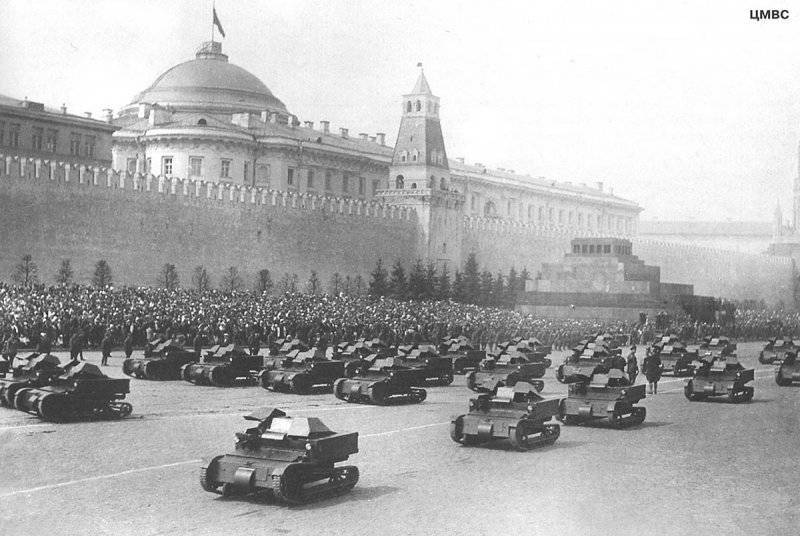
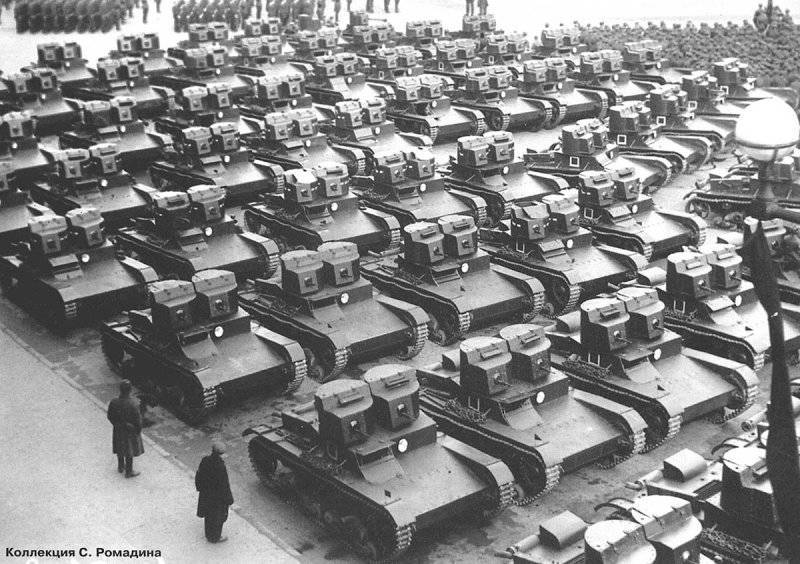
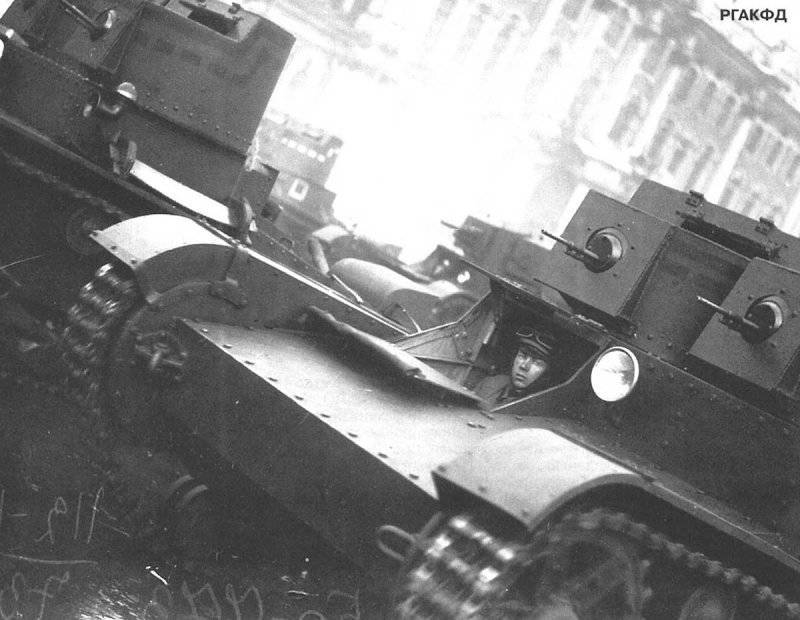
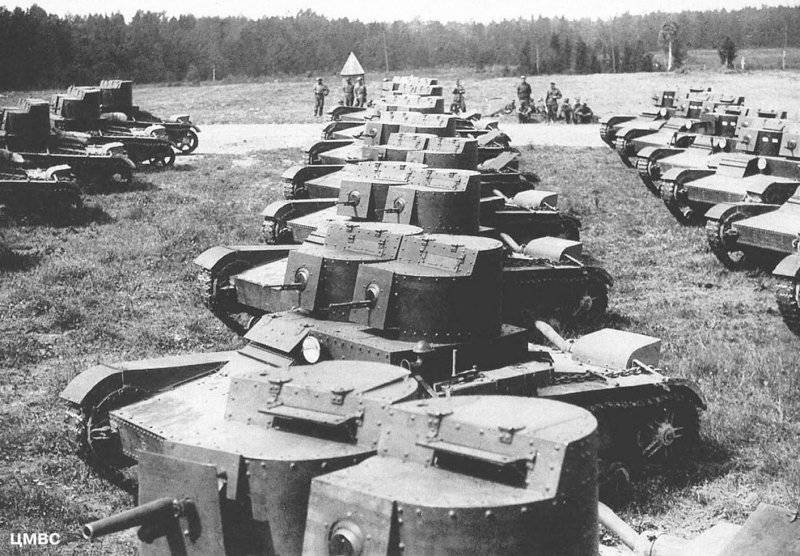
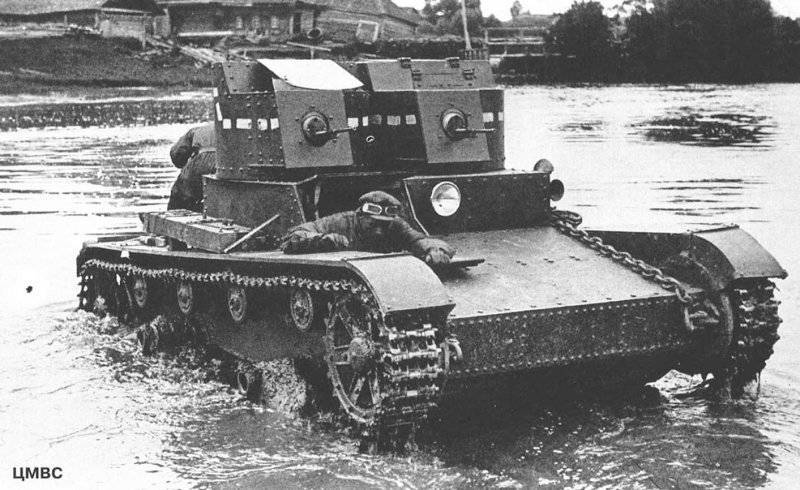
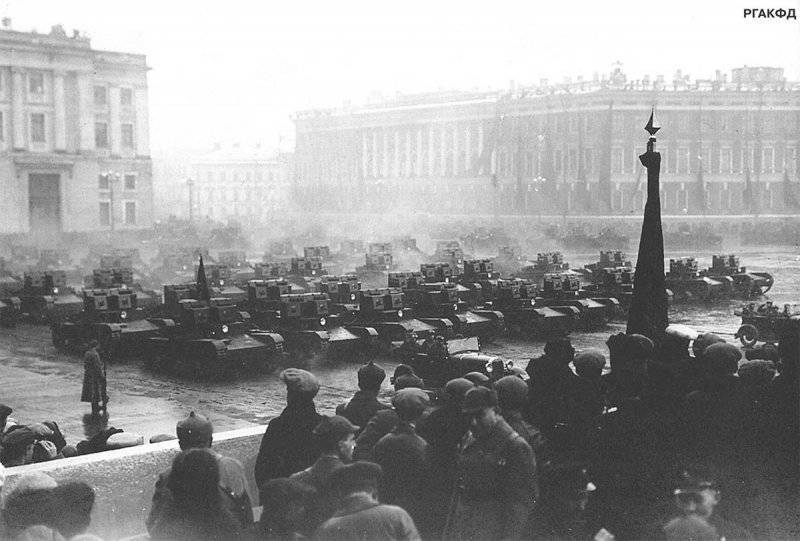
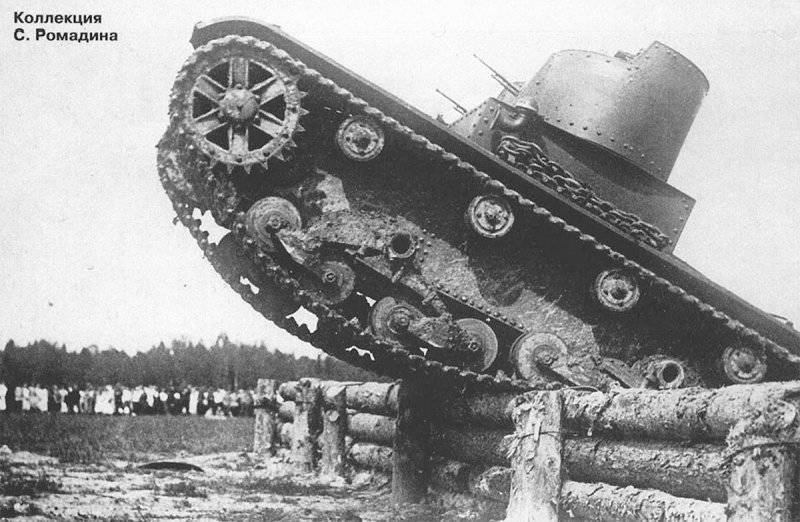
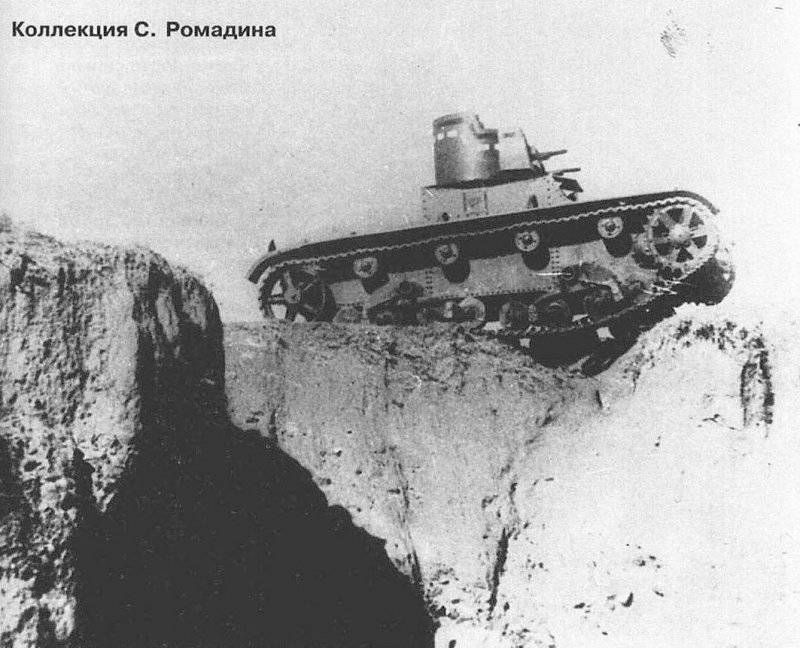
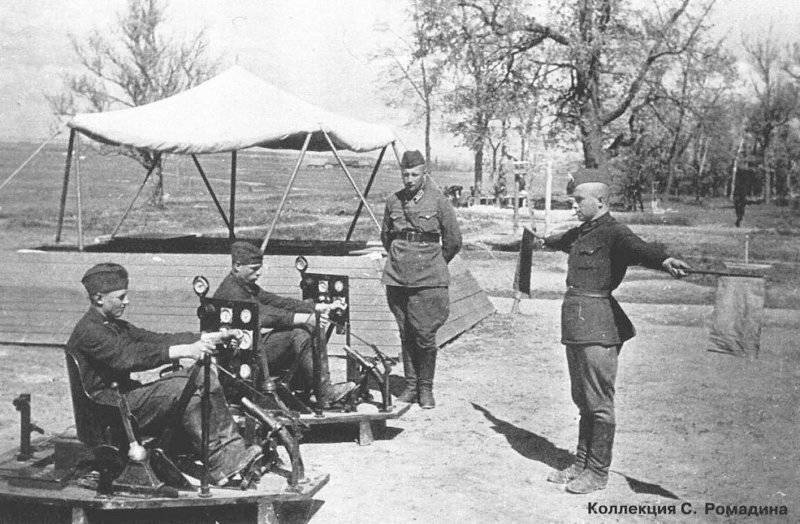
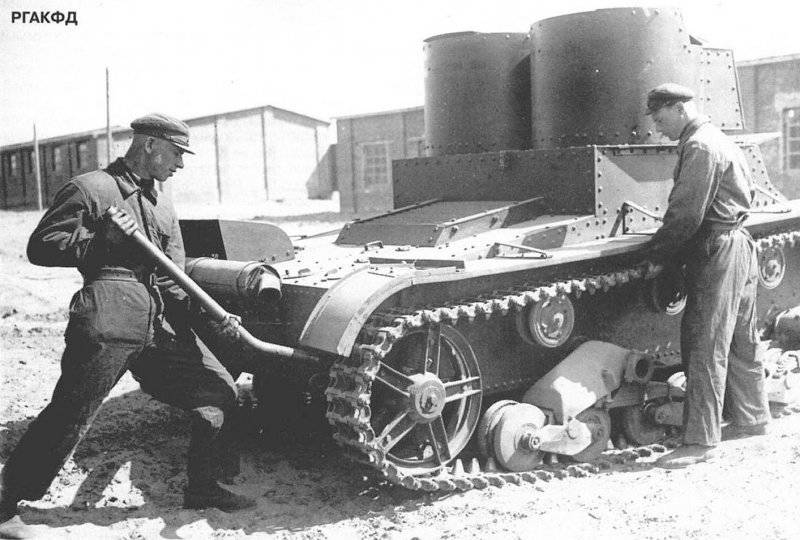
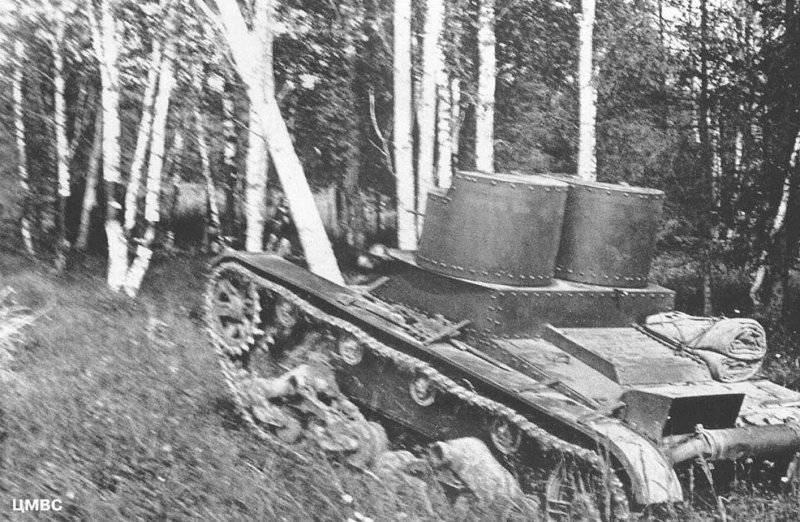
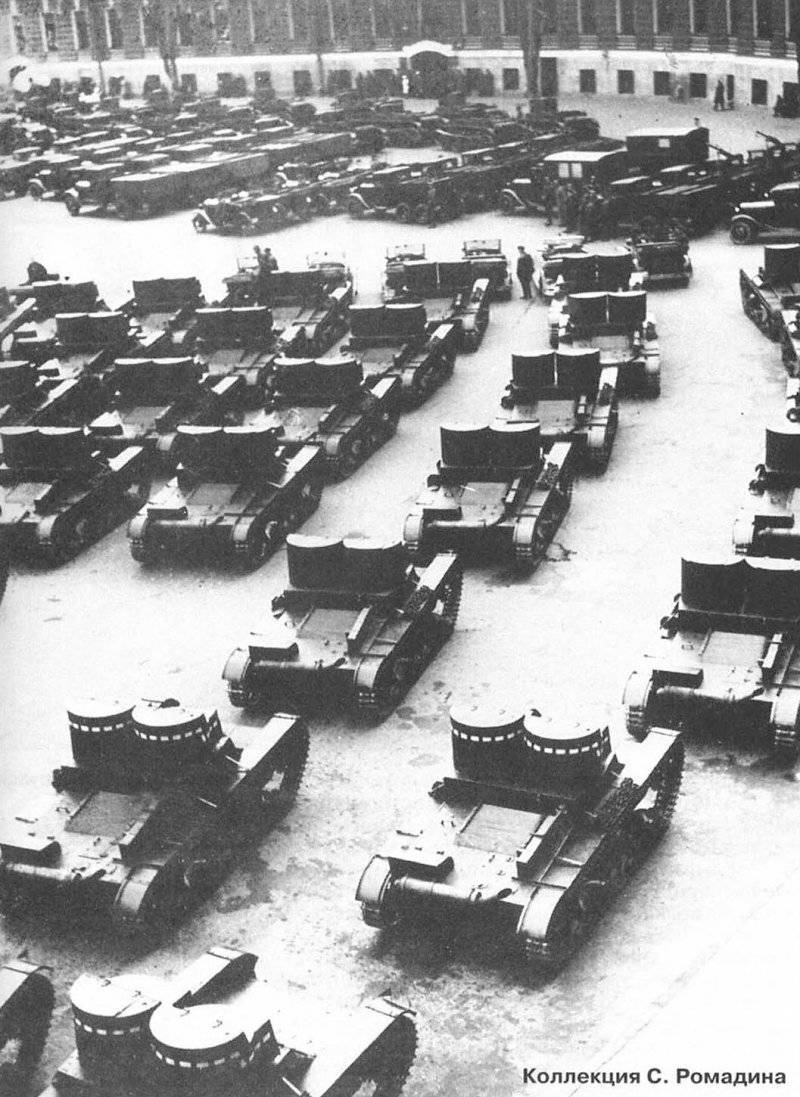
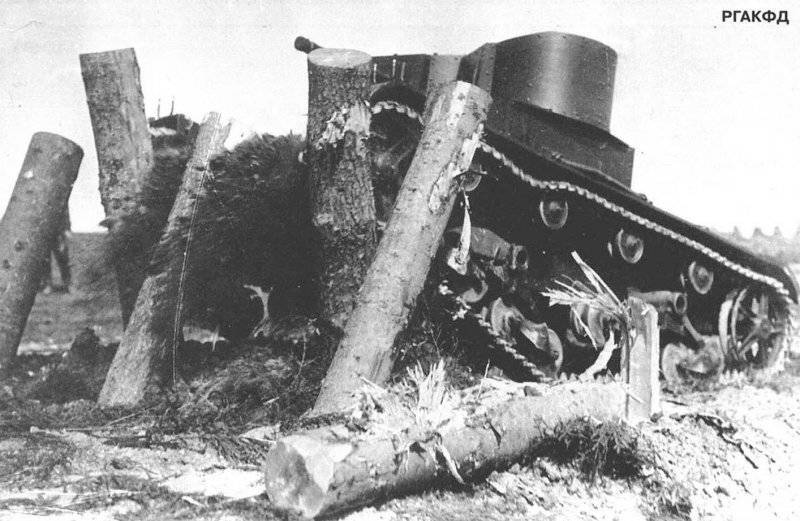
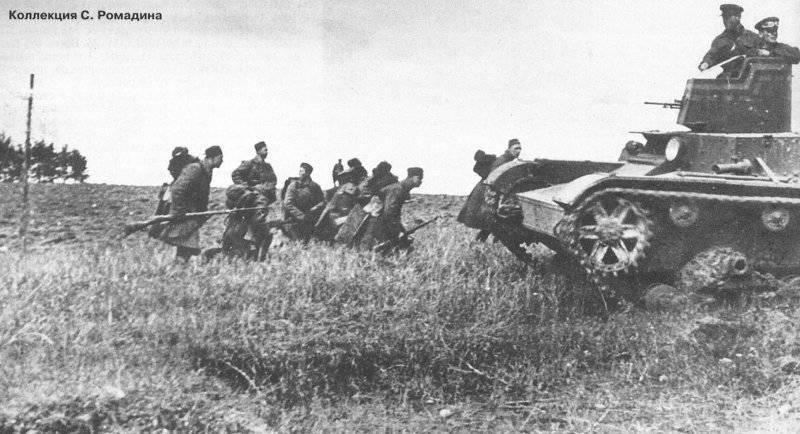
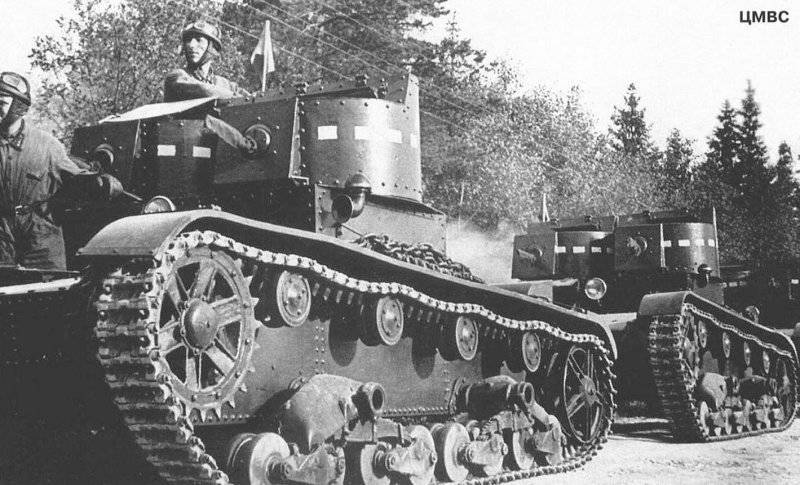
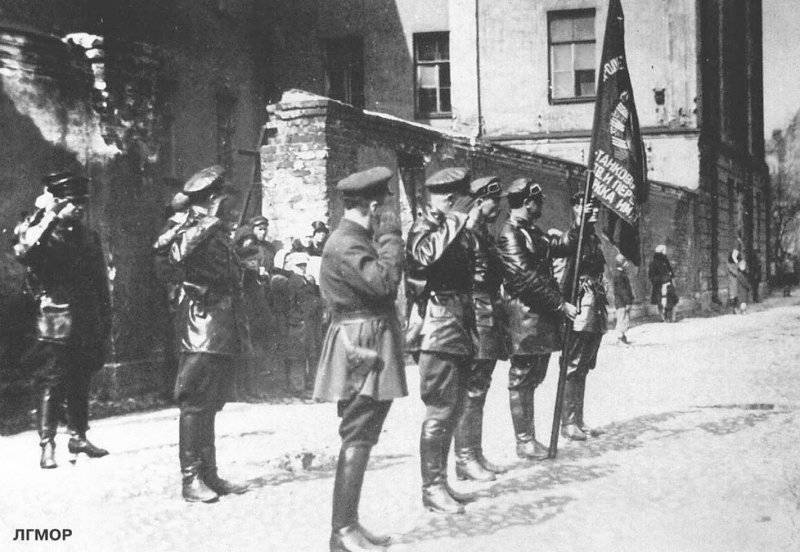
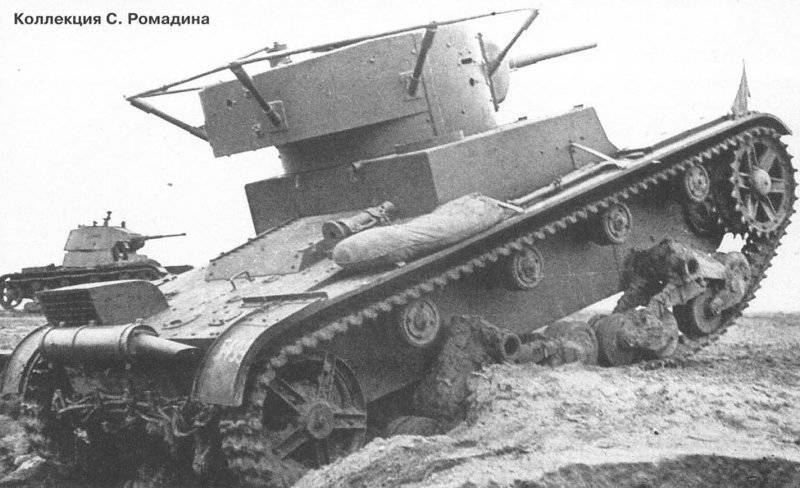
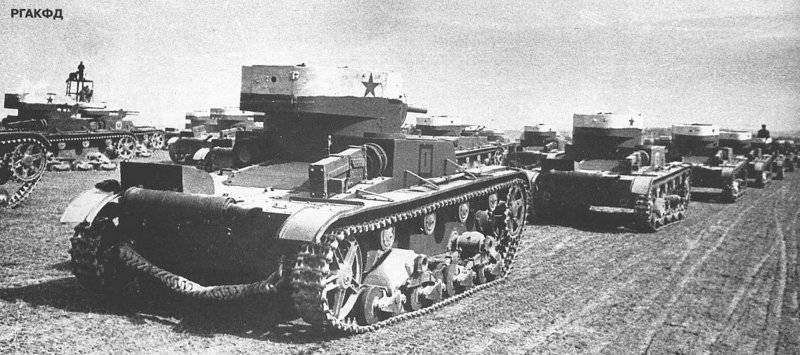
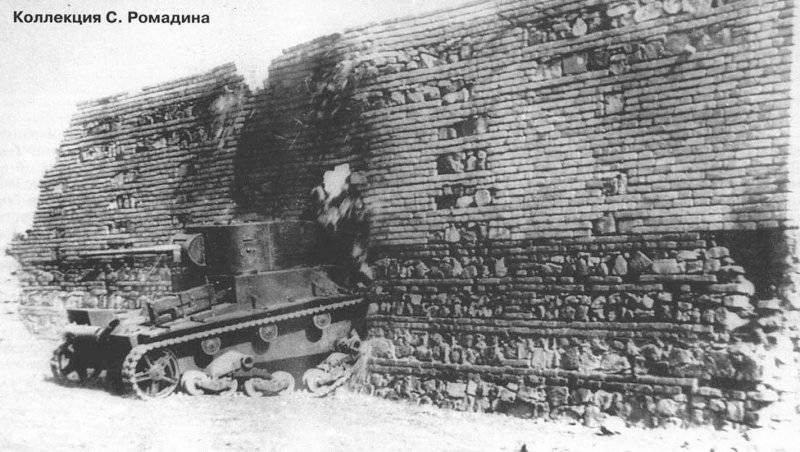
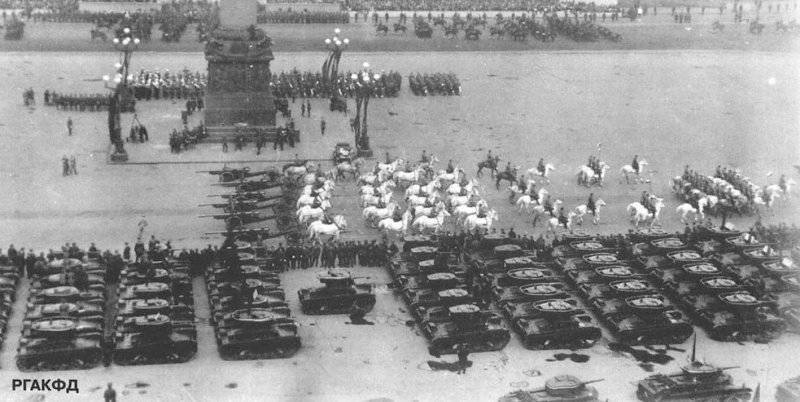
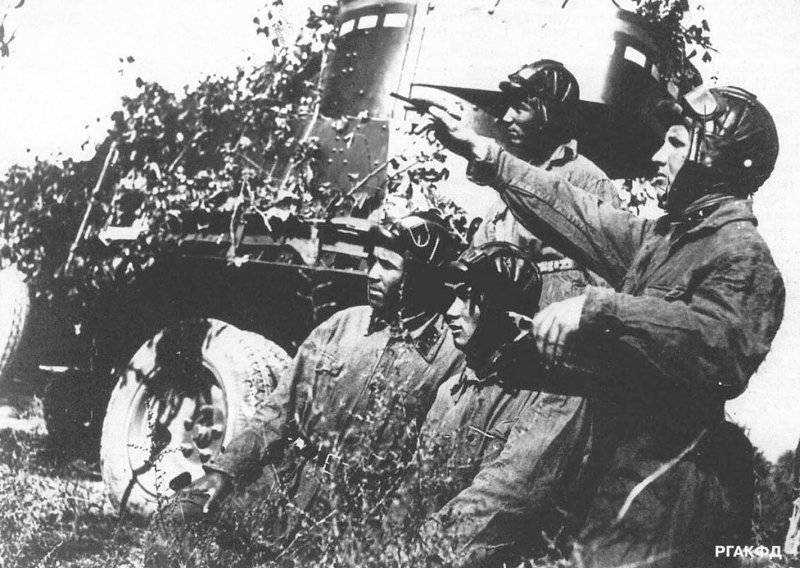
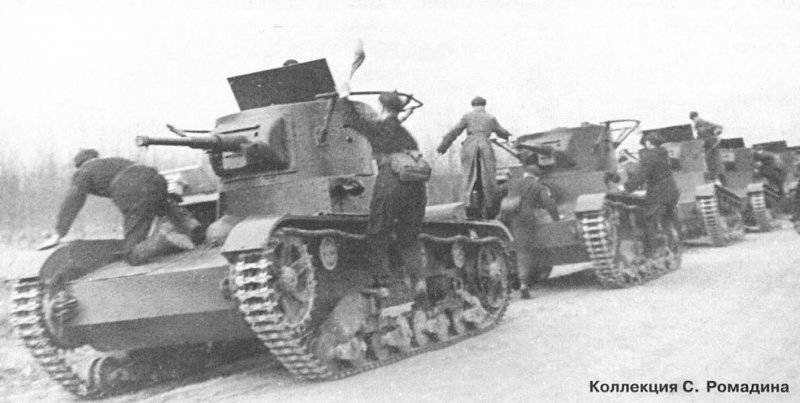
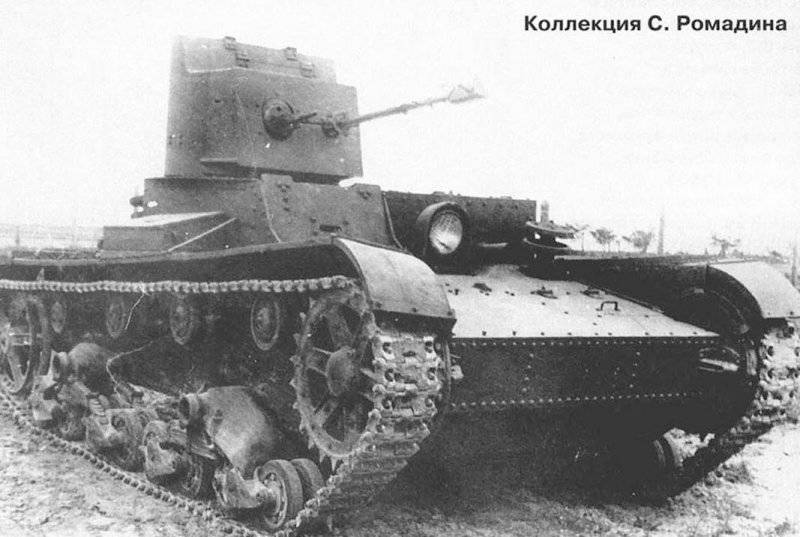
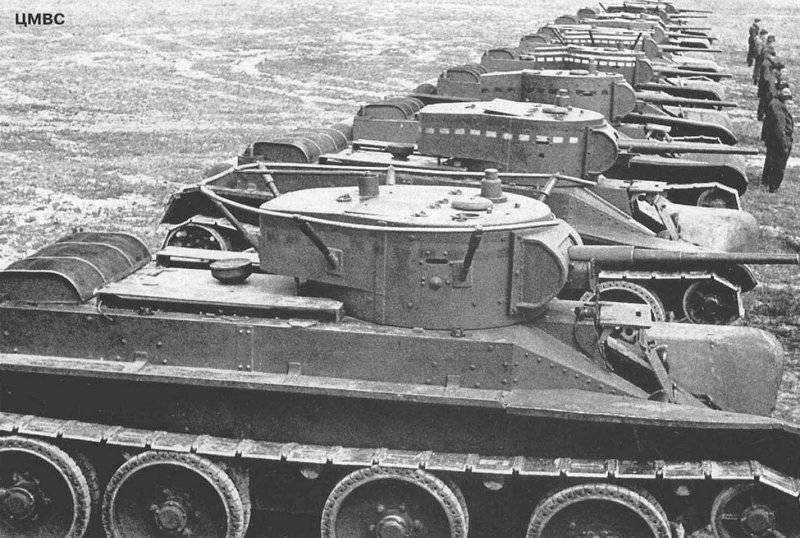
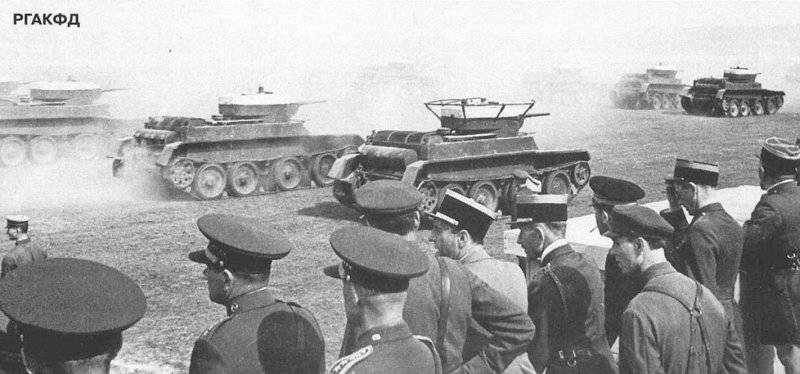
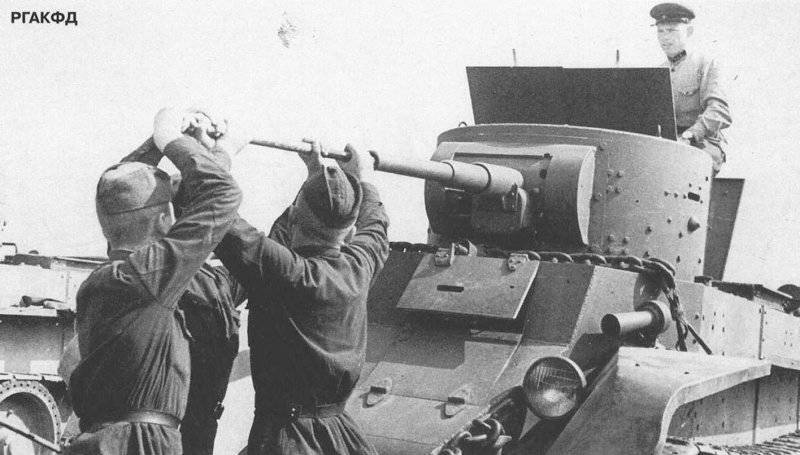
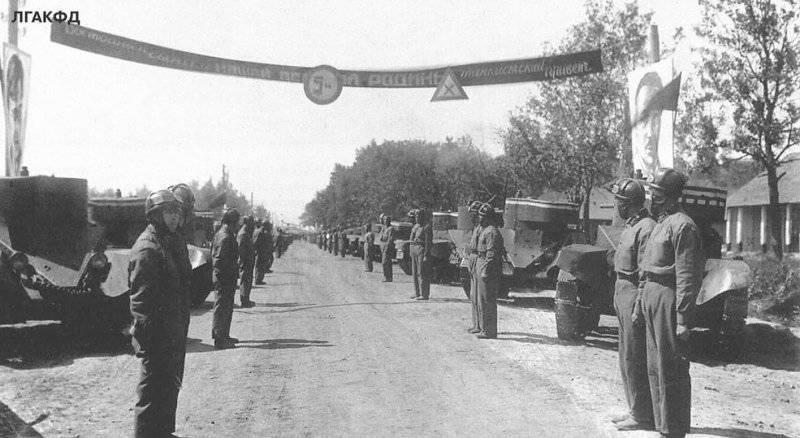
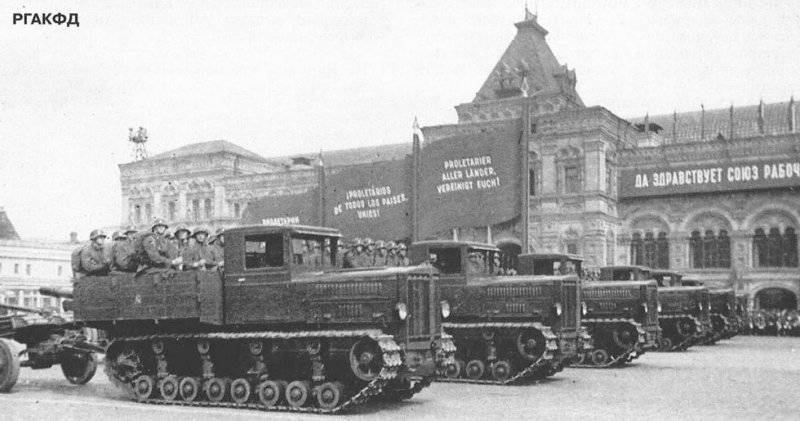
Information